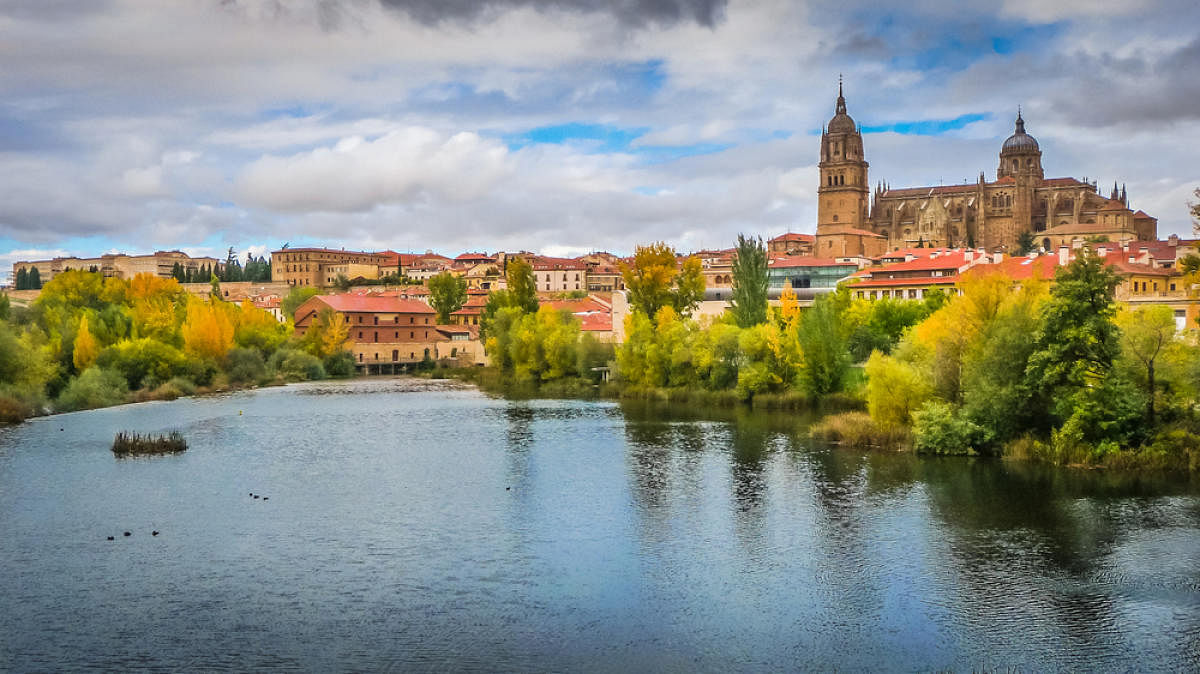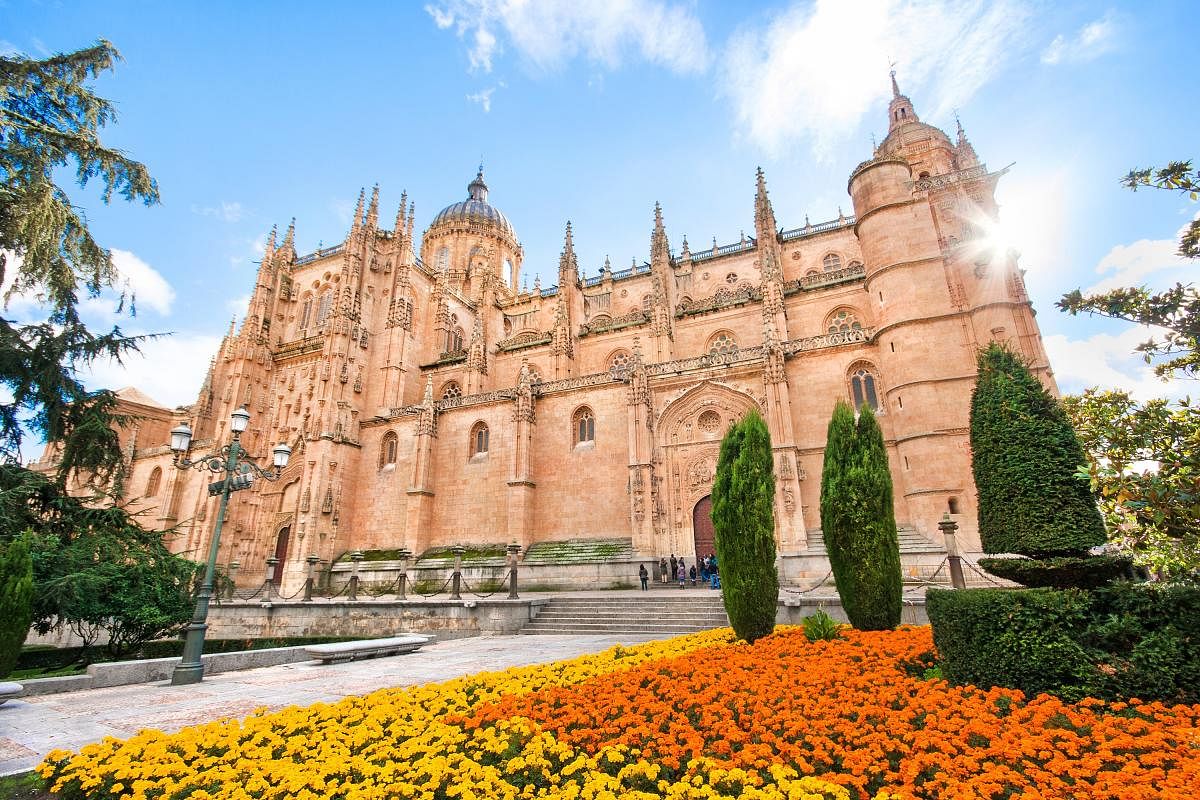

Lying west of Madrid across the River Tormes, the first glimpse of Salamanca reveals elegant spires and domes of churches and cathedrals that soar over the city. Home to some of the oldest and most ornate buildings in the country, many are made with stone in hues of yellow and gold, earning this beautiful city the name, “Golden city of Spain.” But what makes this World Heritage City special are the throngs of college students walking down its cobbled paths and packing its tapas bars, linking the old to the new. Two magnificent cathedrals, a buzzing square and the famous University of Salamanca is the focal feature of the town. Founded in 1218, this university is considered to be the oldest in Spain.
Plaza mayor
Known as the living room of the locals, this 18th-century square, which once served as a marketplace and a bullring, is the beating heart of the city and is the best place to begin a walking tour. Lined with tapas bars and restaurants with outdoor seating, this is where one can sit and get a sense of the town’s long history and experience Salamanca’s special vibe.
Made in Baroque-style architecture, the buildings here date back hundreds of years. The square looks even more stunning at night when it is illuminated. Exhibitions, events and festivals are held regularly and when they are not, live music by local artists makes it one of the most animated spots in the city. This is where you can see old residents enjoying a cup of coffee at outdoor cafes or just watch groups of students letting their hair down. They make up a huge part of the town’s population.
Don’t forget to stop by at Café Novelty, the city’s oldest cafe that goes back to 1905 and was a favourite haunt of writers and artists. A statue of well-known Spanish writer Torrente Ballester, plugs one into the culture of a city with one of the oldest traditions of learning in Europe.
Clerica Towers & Shells House
Climb up these towers for the most gorgeous view of Salamanca spread below. This building which goes back many centuries is now the headquarters of Salamanca Pontificia University.
The climb may be a bit tedious but the panoramic glimpse of the gorgeous cathedrals rising high and the houses dotting the town is well worth the effort. It’s a great spot for clicking pictures.
Walk opposite to visit another landmark, the Shells House, whose facade as the name suggests, is covered with hundreds of shells. Originally the private house of a university professor, it is a public library today and is a beautiful, unusual building that adds to a new dimension to Salamanca’s charm.
New & old Cathedral
This Spanish city is home to two cathedrals — one that goes back to the 12th century and another built between the 16th and 18th centuries. Both are made in different architectural styles, the old one is Romanesque and the new one is late Gothic and Baroque. But they are attached to each other. An eye-catching feature is the carving of an astronaut and a dragon eating ice cream on the façade of the new cathedral.
There are many theories as to how it got there but it is popularly believed that these are modern carvings that were included in the late 1990s when the cathedral underwent restoration. Do go up the Mocha Tower at the Old Tower at sunset for a stunning glimpse of the city when the town literally glows as the sun’s rays fall on the yellow stone structures giving it a magical glow.
Good food is always around in Salamanca. This is where the best ham in Spain is found — Iberian.
The black Iberian pig is a rare breed and the production of this ham is limited to certain regions and Salamanca is one of them.
The reason why this is such high-quality meat is that the animals are reared in the open, have access to fresh water and run around freely in meadows. Those thin slivers of dark red ham are juicy and so flavourful. Bocadillo is a popular sandwich, similar to a baguette stuffed with this ham.
Many shops also sell ham shavings in paper cones which is a perfect on-the-go snack during the long hours of sightseeing.
Tapas bars, where you can relax with a glass of wine, line Plaza Mayor and the streets around.
The Rua Major street has some great options. If you are visiting in summer, do have Tinto de Verano — a drink made with red wine and a dash of soda or lemonade, which the locals drink. It’s a refreshing change from Sangria.
While many visitors take a day trip from Madrid, it is worthwhile to spend a little more time plugging into this town’s unique vibe that effortlessly combines history with youthful energy, that is never in a rush and deserves to be experienced at an easy pace.